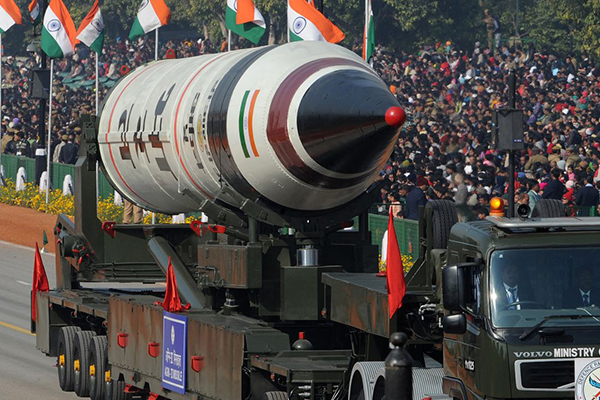With Chinese land-based conventional ballistic missile arsenal rapidly expanding, the DRDO has finalized the design for a 1,500-kilometer range conventionally armed ballistic missile with an anti-ship variant.
While the DRDO is awaiting a green signal from the Narendra Modi government to move to the development stage, the still unnamed conventionally armed missile will deter any ship-based threat in the Indian Ocean, Bay of Bengal, and Arabian Sea. It will also counter any land-based threat from across the Line of Actual Control (LAC) in Xinjiang, Tibet, and Yunnan provinces.
While India has an arsenal of nuclear cruise and ballistic missiles up to 5000 km range from land and up to 3500 km range from sea-based deterrent, it does not have any conventional ballistic missile to tackle the adversary on land and on high seas. The missile will not only deter any carrier-based strike group from threatening India from the Indian Ocean but also provide land-based protection to its own aircraft carriers in the Bay of Bengal and the Arabian Sea through coastal deployment.
The PLA has a growing arsenal of conventional land-based missiles and launchers with a 4,000 km range Dong Feng 26, which is the first and only land-based missile capable of targeting an American air force base in the US territory of Guam in the Indo-Pacific. Called Guam killer by Chinese propaganda media, the DF-26 missile provides a deterrent to PLA against carrier-based strike forces and airborne invasion from a significant distance away from the east coast of China. The other Chinese conventional missile is DF 21 D with a range of 1550 km and with a maneuverable re-entry vehicle for greater accuracy. Dubbed as the world’s first anti-ship ballistic missile, the DF-21 D is referred to by Chinese propaganda media as a carrier killer to threaten US Navy aircraft carriers conducting freedom of navigation operations in the South China Sea.
With Chinese carrier-based strike forces expected to enter the Indian Ocean area by 2025 to match President Xi Jinping’s ambition to become global superpower, India needs a conventional intermediate-range ballistic missile to target any sea-based threat to the country ‘s over 7,000-kilometer coastline apart from island territories. The missile will add punch to India’s submarine based conventional ballistic missile like BA-02 with a range of over 700 km.


















